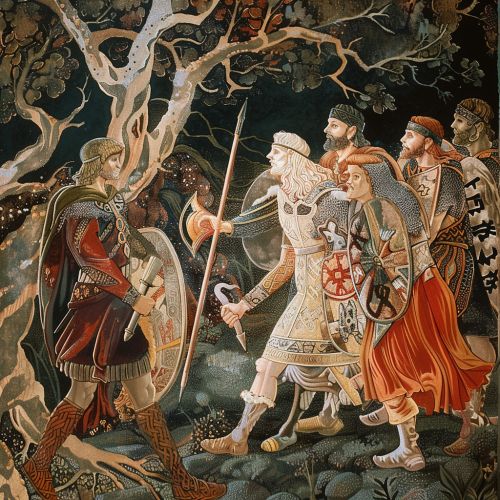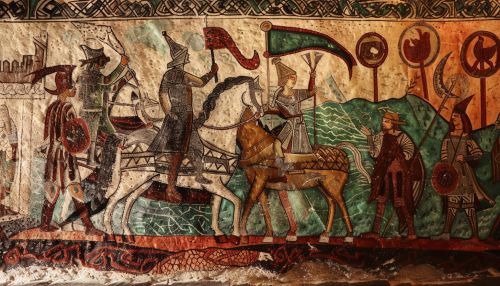Celtic mythology
Origins and Sources
Celtic mythology is the collection of myths from the Celtic polytheistic cultures. These cultures include the ancient Celts of Ireland, Scotland, Wales, and Gaul, among other regions. The mythology is rich with gods, goddesses, heroes, and fantastical creatures, all of which played integral roles in the religious practices and cultural life of the Celtic people.
The primary sources for Celtic mythology are the vernacular literature of Ireland and Wales, which were written down in the Middle Ages but are believed to preserve much older traditions. In Ireland, these sources include epic tales and sagas such as the Táin Bó Cúailnge and the Ulster Cycle, as well as the mythological cycle, which includes stories of the ancient gods. In Wales, the primary sources are the Mabinogion and the Welsh Triads.


Celtic Pantheon
The Celtic pantheon is diverse and complex, with deities often associated with specific aspects of life, nature, or human activities. Some of the most well-known deities include Lugh, a god of many skills; Brigid, a goddess of poetry, healing, and smithcraft; and Cernunnos, a horned god associated with animals and the natural world.
The pantheon also includes a host of lesser-known deities, many of whom are associated with specific localities or tribal groups. These deities often have complex and overlapping functions, reflecting the intricacies of Celtic social and natural environments.
Mythological Creatures
Celtic mythology is populated with a wide array of fantastical creatures. These include the Fomorians, a race of monstrous beings who were the adversaries of the gods; the Sidhe, fairy-like beings who inhabit an otherworldly realm; and the Cu Sidhe, a large, otherworldly hound.
Other creatures include the Selkies, seals that can shed their skins to become human; the Kelpie, a shape-shifting water spirit; and the Banshee, a female spirit whose wailing is said to foretell death.
Mythological Tales
Celtic mythology is rich with tales of heroism, adventure, and magic. These tales often involve gods, heroes, and mythical creatures in complex narratives that reflect the values, beliefs, and social structures of the Celtic cultures.
One of the most famous tales is the Táin Bó Cúailnge, or the Cattle Raid of Cooley, which tells of a great war fought over a prized bull. The tale features many famous characters, including the hero Cú Chulainn, the queen Medb, and the god Lugh.
Other notable tales include the Four Branches of the Mabinogi, a series of four interconnected stories from Welsh mythology; and the adventures of Fionn mac Cumhaill, a legendary Irish hero.
Influence and Legacy
Celtic mythology has had a profound influence on the literature and culture of the Celtic nations, and its impact can be seen in many aspects of modern life. The myths have inspired countless works of literature, art, music, and film, and they continue to be a source of inspiration for many people today.
In addition, the mythology has played a significant role in the development of modern Pagan and New Age spiritualities, particularly those that seek to revive or reconstruct ancient Celtic religious practices.
